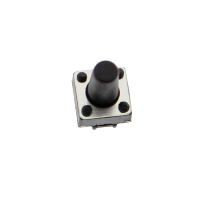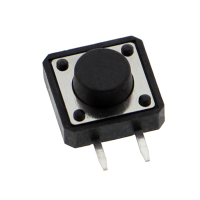Push button for Arduino: Pulse generator for circuits
They should not be missing in any microelectronics project with Arduino or Raspberry Pi: the pushbuttons. But what do we need these small components for?
Microcontrollers can not only output voltage pulses at the digital pins, but also detect whether pulses are coming in. This is called a digital input signal (HIGH or LOW). If we connect a push button to these digital I/O pins, we can read this signal (e.g. within the Arduino IDE) and use it as a condition for program sequences.
We have linked an exciting tutorial on our website www.funduino.de.
The function of pushbuttons
Basically we distinguish between two types of pushbuttons: the so-called normally closed and normally open.
As the name suggests, pressing a normally closed button opens an already closed circuit for the duration of the button press, i.e. the circuit is interrupted. When the button is released, the button returns to its rest position and the circuit is closed.
In the case of normally open contacts, exactly the opposite is the case: in the idle state, the circuit is interrupted. If we press the button, the circuit is closed for the duration of the button press.
Hints for choosing the right pushbutton for your microelectronics project
When selecting the pushbutton module, please make sure that the pushbutton has the right pitch for you. This is usually 2.54mm for Arduino microcontrollers and suitable plug-in boards. In addition, we offer pushbuttons of the variations "horizontal" and "vertical" in our online store. Again, it is important that you think about how the pushbutton should be integrated into your project beforehand.
If you need help in choosing the right pushbutton module, we will be happy to assist you.












